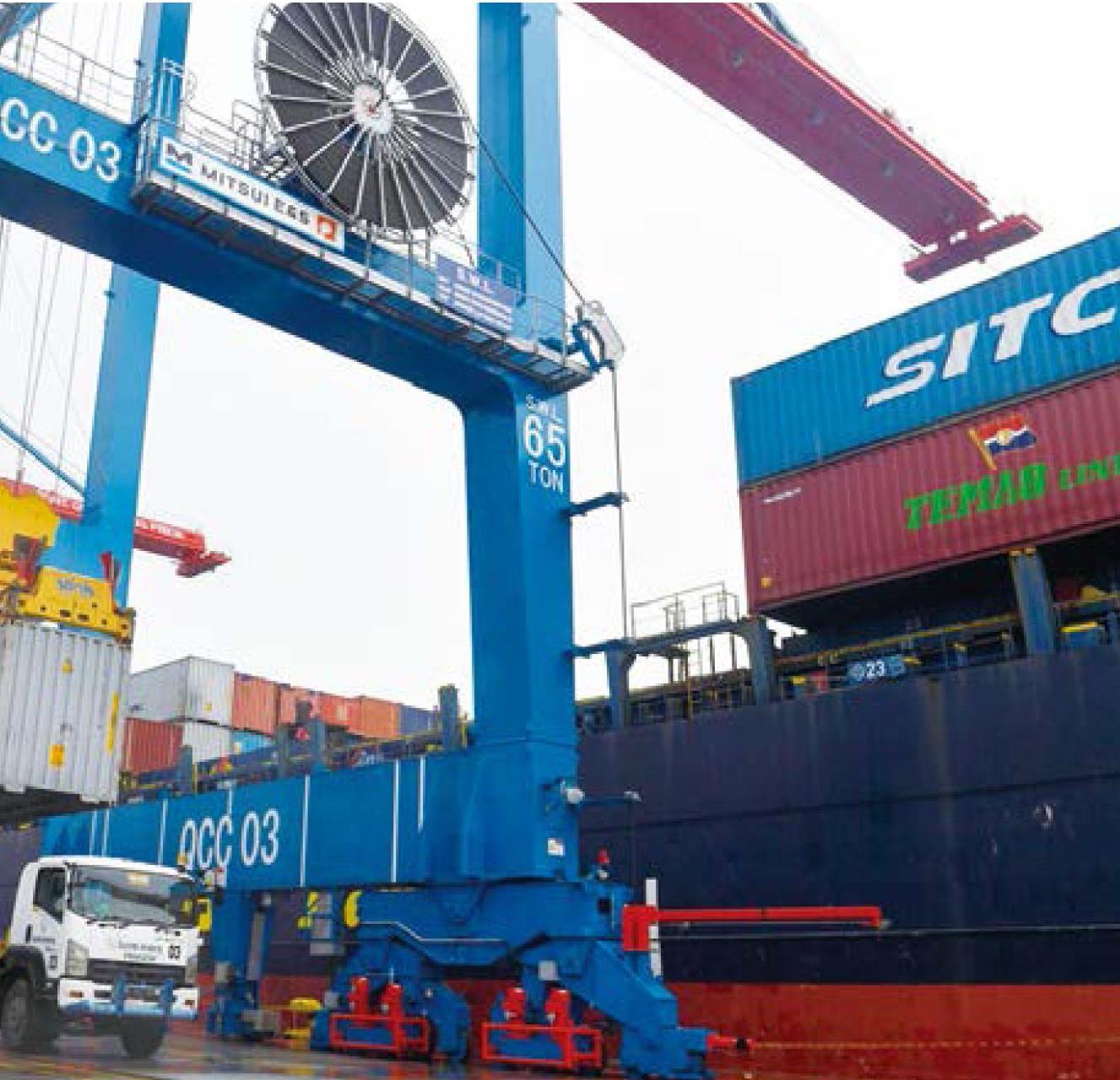推动RCEP生效 释放合作潜能
2021-03-15岩本健太郎
岩本健太郎



中国与其他14个亚太经济体签署《区域全面经济伙伴关系协定》(RCEP)约两周后,中国国务院总理李克强便强调必须将协定落到实处。
“作为RCEP成员国,我国要以自身行动积极推动协定落地生效,维护自由贸易,拓展合作共赢新空间。”李克强总理在2020年12月1日的国务院常务会议上说。
由中国、日本、韩国、澳大利亚、新西兰和东盟10个成员国组成的RCEP约占全球GDP和人口的30%。在2020年11月15日签署协议前,美国彼得森国际经济研究所发表的一项研究显示,预计RCEP削减关税的效力,将使2030年时全球出口额比现在增加大约5000亿美元。
研究表明,东亚三大国首次通过自由贸易协定建立联系,将成为RCEP的最大受益者。据预测,RCEP的签署让中日韩三国的出口将分别增加2480亿美元,1280亿美元和630亿美元。另外,三国间的贸易增长占据了其中很大一部分。
日本国际事务研究所的另一项研究显示,韩国收获的经济贡献可能最大,RCEP对韩国实际GDP的贡献率为6.5%,而日本为5.0%,中国为4.6%。
高盛集团也认为“中日韩共同形成了一个技术共同体,通过加入RCEP,三国的技术活力可以大大提高”,强调了东盟国家和整个地区都将受益于“和平合作、更多的外国投资、快速升级的数字和绿色技术”。
所有这些尚需正式批准。经济学人智库的一份报告预测,还有6个东盟国家和3个非东盟国家要在2021年第3季度才能批准该协定。目前,签署国还在权衡如何才能最大限度地利用该协定。
2020年12月,韩国政府与钢铁、汽车、机械和纺织行业协会举行了一次会议。未来,这4个行业有望获得最为丰厚的回报。2020年,RCEP成员国占韩国钢铁出口的53.2%,高于2019年的46.8%。韩国炼钢协会预计,2021年东盟对这种材料的需求将增加430万吨,达到7730万吨。
韩国汽车制造商则希望RCEP能帮助他们“分割”竞争对手日本在东南亚市场74%的份额。该市场拥有6.5亿人口,年汽车销量达350万辆。
当然,日本汽车制造商也希望自己能提高在东盟市场的销量。该国的工业设备制造商还将享受86%的产品免关税进入中国的政策,韩国也将取消92%的关税。
日本国际事务研究所的柳田贤介表示,对于已经利用现有自贸区的东盟国家来说,减少非关税壁垒会降低进口成本、提高竞争力。未来,马来西亚、菲律宾、新加坡和泰国有望出口更多电子产品。
经济学人智库报告显示,除了关税,“RCEP还协调了原产地规则的条款,建立了一套独立的区域规则,有效建立了一个单一中间产品市场,这些都将推动整个区域供应链的建立。”该智库补充,海关制度一体化可以推动外国投资进入较小的东盟市场,如缅甸、老挝和柬埔寨,这些市场监管的不确定性一直是一个障碍。
亚洲贸易投资的加速却伴随着全球经济的急剧减速。由于新冠肺炎疫情全球大流行,世界贸易组织在2020年10月份预测,2020年全球商品贸易量将萎缩9.2%。国际货币基金组织预计,2020年全球GDP将下降4.4%。
而中国,作为为数不多在2020年实现正增长的经济体之一,决心抓住全球经济的缰绳,驰骋走出当下危机。
就在新年前夕,中国与欧盟签署了一项投资协议。RCEP签署后的几天,中国也对加入另一大型贸易协议——有11个成员国的《全面与进步跨太平洋伙伴关系协定》(CPTPP)表示兴趣。
但有些人看来,未来局势并不明朗。
堪萨斯大学专门研究贸易法的著名教授拉吉·巴拉指出,在商品和服务、外国直接投资和知识产权的覆盖范围方面,RCEP没有CPTPP和其他大型协议那么大。
亚洲韩礼士基金会研究员亚历克斯·卡普里也提出了类似的观点。在他看来,RCEP是一个受到认可的多边主义愿景,但他也提醒成员国在执行深层次贸易标准时关注自身能力的差异。
“总的来说,RCEP允许个别国家选择退出并表明退出的关键条款。这算是一个分层协议。”同时兼任新加坡国立大学商学院客座高级研究员的卡普里表示,“比如,印度尼西亚要求推迟2年执行贸易便利化条款。在RCEP倡导电子商务、投资和解决争端的同时,RCEP成员国中的个别国家也加倍努力在数据本地化法律上下功夫。协定中的条款最终是否会得到广泛统一的颁布和执行,我对此持观望态度。”
范围有限和执行情况不明确并不是阻止RCEP打破全球平衡的唯一因素。巴拉和卡普里都指出,拜登在美国大选中打败特朗普,希望能重申美国的领导地位。但他并未明确表示,是否会考虑加入RCEP,或者推翻前任退出TPP(现已成为CPTPP)的决定。但在2020年12月28日的一次演讲中,這位总统誓要“重新获得世界的信任和信心。”
巴拉预测,拜登头几年可能不会带来什么重大的自由贸易举措,“但往后有可能会看到他作出惊人举动。”
·来源:《日经亚洲》
·编译:陈志莹
The Next Great Leap in Thailands Transportation Infrastructure
If you live in Bangkok, there is a slim chance that you would miss noticing the extravagant Bang Sue Grand Station while driving on the Sri Rat Expressway. If you get stuck up there in a traffic jam, which is common in this city, you could even spend time to carefully study the futuristic structure from different angles.
Its function is explicitly hinted from its exterior that has a New Yorks Grand Station-like vibe. This grand station is on its way to becoming another top attraction in Bangkok — a new landmark with an external design inspired by Hua Lamphong Station but with a modern twist recognizable from miles away. The station is Thailands next mega infrastructure project which will not only help ease Bangkoks infamous traffic congestion, but also support the countrys role as a regional transportation hub. It is positioned to strengthen Thailands railway system and its connections with the regional transportation network, hence enhancing economic growth.
If there is one word to describe the rationale of this project — it is mobility. Thailand has great ambitions to use its railway network to transport passengers and goods more effectively and more economically, particularly to lower its logistics cost which stands around 13.6% of GDP in 2018. Since the inception of the railway system in Thailand in 1893, this is probably the first bold move to upgrade the system at a mega scale.
Bang Sue Grand Station is just one piece of the whole jigsaw puzzle, albeit a major one. It will replace the grande dame Bangkok Station or Hua Lamphong as the capitals railway hub with a much larger capacity and seamless connectivity to match Thailands regional ambitions. Besides intercity trains, it will also serve underground, commuter and high-speed trains that link Suvarnabhumi, Don Mueang, and U-Tapao international airports. The 220 kilometres train route between Don Mueang in Bangkok and U-Tapao in Rayong province could be traveled in under an hour, ready to transport Bangkokians to hit the Rayong beach in only a heartbeat.
To date, the external construction of the station has already been completed, and only interior tweeks are required for the station to be fully functional by 2021. The station covers an area of 1,280 acres, and is set to be the largest railway station in Southeast Asia. Standing four stories high, with 12 platforms and 24 tracks, Bang Sue Grand Station can accommodate 26 to 40 trains at the same time, with a daily passenger capacity as high as 600,000 persons or ten times more than its century old predecessor Hua Lamphong Station. Think about it. More trains means less waiting time and faster travels.
Designed to be environmentally friendly, the station will have at least 30% green spaces and according to Voravut Mala, former Acting Governor of the State Railway of Thailand, it will be? pollution free since it will serve only electric trains.
Initially, the station was planned as an extension of the Red Line Mass Transit System in the national Infrastructure Development Plan (2015-2022). Later on, authorities expanded the plan, transforming the main terminus platform to accommodate various types of rail services. Similar to Japans Tokyo Station and Taiwans Taipei Main Station, Bang Sue Grand Station will act as a new transit hub primed with facilities for future installments of hi-tech equipment and system.
Once the high speed railway to U-Tapao is completed, it will facilitate travel between Bangkok and the Eastern Economic Corridor (EEC), a flagship project of Thailand to promote higher valued investments of upgraded industries that are more high-tech-oriented. It will also complement Thailands prominent tourism industry, as well as contribute to urbanisation and the decentralisation of cities, expanding economic opportunities beyond city walls.
People living in surrounding areas of Bangkok, the next generation of rail services will enable them to skip the traffic and hop on the ‘Red Line commuter trains. There are two routes in the Red Line; the north-south Dark Red Line from Ayutthaya to Ratchaburi for a distance of 114.3 kilometres, and the west-east? Light Red Line connecting Nakhon Pathom with Chacheongsao in 127.5 kilometres.
For those looking forward to hopping onto the first high-speed train, the journey also starts at Bang Sue Grand Station, as the station will offer a platform for extended high-speed railway projects in the upcoming decades.
The first high-speed train project to be materialised is the route from Bangkok to Nong Khai, a Thai-Sino collaboration to connect Thailand with Lao PDR and China. The first phase from Bangkok to Nakhon Ratchasima spanning 250.77 kilometres is under construction right now. The rest of the route linking Nakhon Ratchasima with Nong Khai covers a distance of 356.1 kilometres. Once completed, this project will enable travellers from Bangkok to reach Nong Khai in just three hours time instead of the usual 11-hour train ride or the 8-hour drive on the road.
Consequently, Bang Sue Grand Station and Thailands railway network will enhance ASEAN intraregional connectivity and could, in the foreseeable future, be extended to link with Chinas Belt Road Initiative (BRI) or other prospective bilateral or regional logistical projects.
The plan for Bang Sue Grand Station is not limited only to trains and tracks. Inspired by the success of Japan in urban development based on railway, Thailand hopes to promote Bang Sue Grand Station as a catalyst for developing a New Central Business District around the station. The State Railway of Thailand (SRT) plans to adopt the Transit Oriented Development (TOD) model into the surrounding the area to draw in more investment in business complexes and residential units.
This infrastructural elevation will undoubtedly generate a new stream of jobs and income for the local economy. At the same time, the infamous Bangkok traffic will hopefully ease as a result of a more efficient commuting network, subsequently decreasing the number of city dwellers as they spread out to reside outside city areas. Completion of this mega project is timely as Thailand and the world is facing a pandemic. Mass employment and business opportunities both domestically and regionally could offer a chance for the people and the economy to finally pick up and get back on track.
· Source: Ministry of Foreign Affairs of the Kingdom of Thailand
